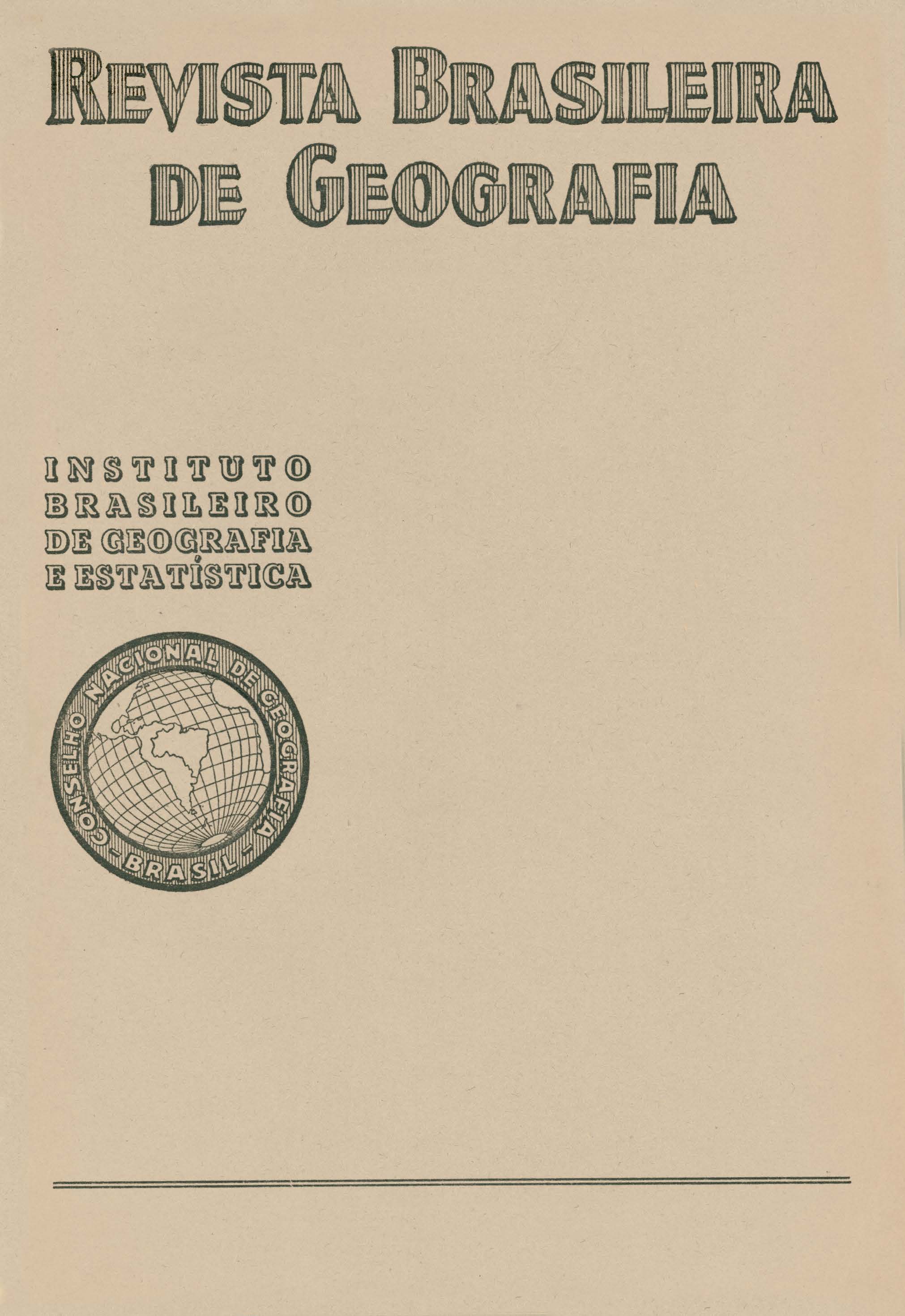O Rio Amazonas e sua bacia
Resumo
Professor CARLOS MIGUEL DELGADO DE CARVALHO, a member Of the Central Directorate Of the National Council of Geography and of the Editing Committee of this Review, in this article deals with the hydrographic basin of the Amazon River.
To begin with he takes up the question of the sources of the Amazon and examines the different interpretations submitted, such as those of the Lauricocha Lake and Marañon River, the sources of the Ucayali, of the Vilacanota (in which case the Amazon would become the second longest river in the world), and also the confluence of the Marañon and Ucayali Rivers.
He analyses its fluvial characteristics such as extension of basin, measuring over 6 million square kilometres, its typical feature of a river of the plains with a very slight slope, its considerable width and depth and the enormous volume of water it carries to the sea. While dealing with its channels and feeders, he examines the vocabulary used in local hydrography, distinguishing the meanings of the terms "paraná", "furo" and "igarapé". The classification which he submits of mainland lakes and flood-plain lakes, forming six different regional groups, is an important contribution. Another interesting aspect is that of the "terra caída" (bank erosion), resulting in the undermining of the banks washed away by the waters of the great river.
In spite of the high level of the floods, the flow of the river' is comparatively regular, owing to the fact that the flood periods of the tributaries of the right bank do not coincide with those of the left, for the former belong to the Southern hemisphere and the latter to the Northern. This compensation is called "interference". Another important factor of its regularity is the presence of the marginal lakes which act as compensating reservoirs.
The author dedicates special attention to the study of the mouth of the Amazon. While treating of the archipelago to be found there, he studies the manner of the formation of these islands which are of alluvial and deltaic character. With reference to the delta itself, the existence of which constitutes a much debated problem, - to the point of Euclides DA CUNHA (a renowned Brazilian writer) having affirmed that "the greatest river possesses no delta" – the author examines this question in accordance with the most recent geologic and paleontological findings.
He discusses the famous presumption that the alluvial earth brought down by the river is carried away by sea currents and deposited in foreign lands, and states the same is not sufficiently proven. Next he studies the question of the rise and fall of the coast, makes a summary of the formation of the Amazonian plain, and comes to the conclusion that the Amazon River constructed its delta in the quaternary period in the direction of Caviana Island. The island of Marajó is considered as being a grouping of several others, with a tendecy to become a peninsula with the silting of the "furos", or channels, that separate it from the mainland.
A study is likewise made of the phenomenon known as "pororoca", which is a result of the "clashing of the tidal and fluvial currents over the shallow sand-banks.
In the Iast chapter the author deals with the main tributaries of the Amazon and delves in to the characteristic traits of every one, specially of the following: - Içá, Japurá, Negro, Purús, Madeira, Tapajoz, Xingú and Tocantins. As to the last he is of the opinion that it was never, in any geologic period, a direct tributary of the Amazon, its mouth being distinct, under the name of Pará River.






